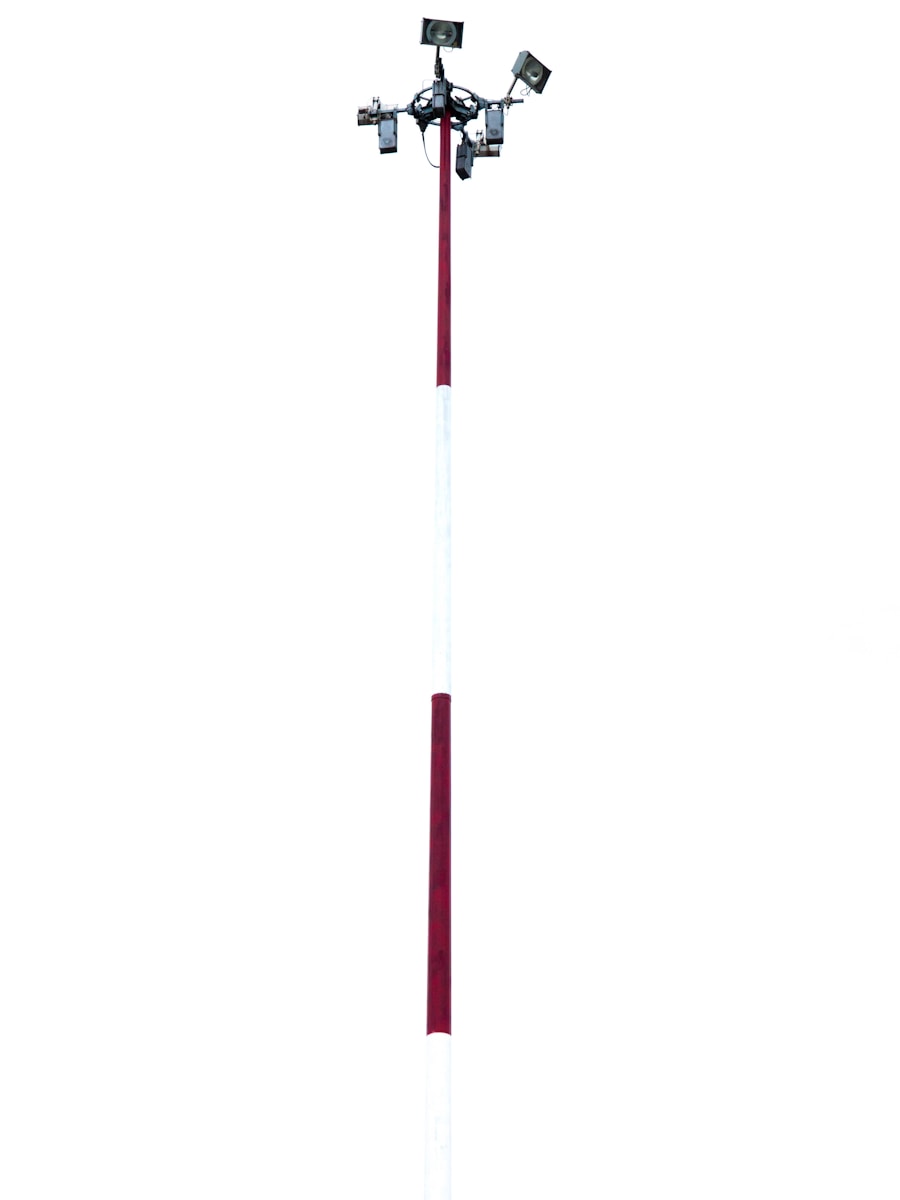The length of hiking poles plays a crucial role in the overall hiking experience, influencing not only comfort but also stability and efficiency on the trail. When hiking, the terrain can vary significantly, from steep inclines to rocky descents, and having the right pole length can make a substantial difference in how well a hiker navigates these challenges. A pole that is too short may lead to poor posture and increased strain on the knees and back, while a pole that is too long can cause instability and fatigue.
Therefore, understanding the importance of hiking pole length is essential for both novice and experienced hikers alike. Moreover, the correct pole length can enhance balance and support, particularly when traversing uneven ground or carrying a heavy backpack. Hiking poles can help distribute weight more evenly across the body, reducing the impact on joints and muscles.
This is especially beneficial for those who may have pre-existing conditions or are recovering from injuries. The right length allows for a natural arm swing, which can improve overall endurance and reduce fatigue during long hikes. Thus, selecting the appropriate hiking pole length is not merely a matter of preference; it is a fundamental aspect of ensuring safety and comfort on the trail.
Key Takeaways
- The right hiking pole length is important for stability, balance, and reducing strain on your joints.
- Factors to consider when choosing hiking pole length include terrain, personal preference, and intended use.
- To measure the right hiking pole length, stand upright with your elbow at a 90-degree angle and adjust the pole until your forearm is parallel to the ground.
- Using the correct hiking pole length can improve posture, reduce fatigue, and provide better support on uneven terrain.
- Common mistakes when choosing hiking pole length include not adjusting for different terrains and not considering personal height and arm length.
Factors to Consider When Choosing Hiking Pole Length
When selecting the appropriate length for hiking poles, several factors come into play that can significantly affect the choice. One of the primary considerations is the hiker’s height. Generally, taller individuals will require longer poles, while shorter individuals will benefit from shorter poles.
However, height alone does not dictate the ideal pole length; it must be considered alongside other factors such as arm length and personal comfort preferences. For instance, a person who is 6 feet tall may have longer or shorter arms than another individual of the same height, which can influence how they interact with their poles. Another critical factor is the type of terrain that will be encountered during hikes.
For steep ascents, shorter poles may be more advantageous as they allow for better leverage and control. Conversely, when descending or navigating flat terrain, longer poles can provide additional support and stability. Additionally, the weight of the hiker’s backpack can also affect pole length choice; heavier loads may necessitate longer poles to maintain balance and reduce strain on the body.
Therefore, understanding these various factors is essential for making an informed decision about hiking pole length.
How to Measure the Right Hiking Pole Length

Measuring for the correct hiking pole length involves a straightforward process that can be done at home with minimal equipment. A common method is to stand upright with your arms relaxed at your sides. From this position, bend your elbows at a 90-degree angle and measure from the ground to your wrist.
This measurement typically provides a good starting point for determining the appropriate pole length. Many manufacturers offer poles in various lengths, so it’s essential to choose one that closely matches this measurement. Another effective way to ensure proper pole length is to test them out in-store if possible.
Many outdoor retailers have adjustable poles available for customers to try. When testing poles, ensure that they are set to your measured length and take a few steps while using them. Pay attention to how your arms move and whether you feel comfortable with the height.
If you find yourself straining or if your elbows are too straight or too bent, adjustments may be necessary. This hands-on approach allows hikers to find a pole length that feels natural and supportive.
Benefits of Using the Correct Hiking Pole Length
| Benefits | Metrics |
|---|---|
| Reduced Strain on Joints | Studies show a 12-25% reduction in strain on the lower body joints when using correctly sized hiking poles. |
| Improved Stability | Properly sized hiking poles can increase stability by 20-30%, reducing the risk of falls and injuries. |
| Increased Endurance | Hikers report a 10-15% increase in endurance when using the correct pole length, leading to longer and more enjoyable hikes. |
| Enhanced Posture | Using the right pole length can improve posture and reduce back strain, leading to a more comfortable hiking experience. |
Utilizing hiking poles of the correct length offers numerous benefits that enhance both safety and enjoyment on the trail. One of the most significant advantages is improved stability. Properly sized poles provide additional points of contact with the ground, which can help prevent slips and falls on uneven terrain.
This stability is particularly beneficial when navigating rocky paths or crossing streams where footing may be uncertain. By providing extra support, hikers can maintain their balance more effectively, reducing the risk of injury. In addition to stability, using poles of the correct length can also lead to better energy efficiency during hikes.
When poles are adjusted to fit a hiker’s body properly, they facilitate a natural arm swing that complements leg movement. This coordination allows for a more fluid walking motion, which can conserve energy over long distances. As a result, hikers may find themselves less fatigued at the end of their journey, enabling them to enjoy their surroundings more fully and tackle longer trails without excessive strain.
Common Mistakes When Choosing Hiking Pole Length
Despite the importance of selecting the right hiking pole length, many hikers make common mistakes that can lead to discomfort or even injury on the trail. One prevalent error is failing to consider personal comfort when choosing pole length. While general guidelines based on height can be helpful, individual preferences vary widely.
Some hikers may prefer slightly longer or shorter poles based on their unique body mechanics or specific hiking styles. Ignoring these personal nuances can result in poles that do not provide adequate support or lead to awkward movements. Another frequent mistake is neglecting to adjust pole length based on terrain changes during a hike.
Many hikers set their poles to one length at the beginning of their journey and fail to make adjustments as they encounter different elevations or surfaces. For example, descending steep hills often requires shorter poles for better control, while climbing may necessitate longer poles for leverage. Failing to adapt pole length throughout a hike can lead to increased fatigue and discomfort, detracting from the overall experience.
Adjusting Hiking Pole Length for Different Terrains

Ascending Steep Inclines
When ascending steep inclines, shortening the poles can provide better leverage and allow for more effective propulsion with each step. This adjustment helps maintain an upright posture and reduces strain on the back and knees by allowing hikers to push down through their poles rather than relying solely on their legs.
Descending Steep Slopes and Navigating Uneven Ground
Conversely, when descending steep slopes or navigating uneven ground, extending the poles can offer additional stability and support. Longer poles help distribute weight more evenly and provide extra points of contact with the ground, which can be particularly beneficial when traversing loose gravel or rocky surfaces.
Enhancing Balance and Control
By adjusting pole length based on terrain conditions, hikers can enhance their balance and control while minimizing fatigue and potential injuries. This essential skill is crucial for any hiker looking to optimize their performance and comfort on various trails.
Choosing the Right Hiking Pole Length for Your Height
Selecting the right hiking pole length based on height involves understanding general guidelines while also considering individual variations in body proportions. A common rule of thumb suggests that hikers should choose poles that are approximately 0.68 times their height in centimeters; for example, a person who is 180 cm tall would ideally use poles around 120 cm long. However, this formula serves as a starting point rather than a definitive answer.
It’s important to remember that arm length plays a significant role in determining ideal pole length as well. Hikers with longer arms may find that they prefer slightly longer poles even if they fall within a specific height range. Conversely, those with shorter arms might feel more comfortable with shorter poles despite their height suggesting otherwise.
Therefore, it’s advisable for hikers to experiment with different lengths before committing to a purchase, ensuring that they find a pair of poles that feels comfortable and supportive during use.
Tips for Maintaining and Caring for Your Hiking Poles
Proper maintenance and care of hiking poles are essential for ensuring their longevity and optimal performance over time. One key aspect of maintenance involves regular cleaning after each hike, especially if trails are muddy or wet. Dirt and debris can accumulate in joints and locking mechanisms, potentially leading to malfunctions or decreased stability during use.
A simple wipe-down with a damp cloth followed by thorough drying can help keep poles in good condition. Additionally, inspecting hiking poles for signs of wear or damage before each outing is crucial. Check for cracks in the shaft, wear on rubber tips, or issues with locking mechanisms that could compromise safety during use.
If any problems are detected, addressing them promptly—whether through repairs or replacement—can prevent accidents on the trail. Storing hiking poles in a cool, dry place when not in use also helps protect them from environmental factors that could lead to deterioration over time. By understanding these various aspects of hiking pole selection and maintenance, hikers can enhance their outdoor experiences significantly while ensuring safety and comfort throughout their adventures.
When determining how tall hiking poles should be, it is important to consider factors such as terrain, personal height, and comfort. A related article on travel gear that can enhance your outdoor adventures is this guide on the best travel scooter. Just like choosing the right hiking poles, selecting the right travel scooter can greatly improve your mobility and overall experience while exploring new destinations.
Love travel? Join Our Facebook Community
FAQs
What is the ideal height for a hiking pole?
The ideal height for a hiking pole is one that allows your arm to be at a 90-degree angle when holding the pole with the tip on the ground.
How do I determine the correct height for my hiking pole?
To determine the correct height for your hiking pole, stand with the pole in your hand and adjust it until your elbow is at a 90-degree angle when the tip of the pole is on the ground.
Are there adjustable hiking poles available?
Yes, there are adjustable hiking poles available that allow you to customize the height to your preference and the terrain you are hiking on.
What are the benefits of using the correct height hiking pole?
Using the correct height hiking pole can help reduce strain on your joints, improve balance, and provide stability on uneven terrain.
Can the ideal height for a hiking pole vary for different people?
Yes, the ideal height for a hiking pole can vary for different people based on their height, arm length, and personal preference.
